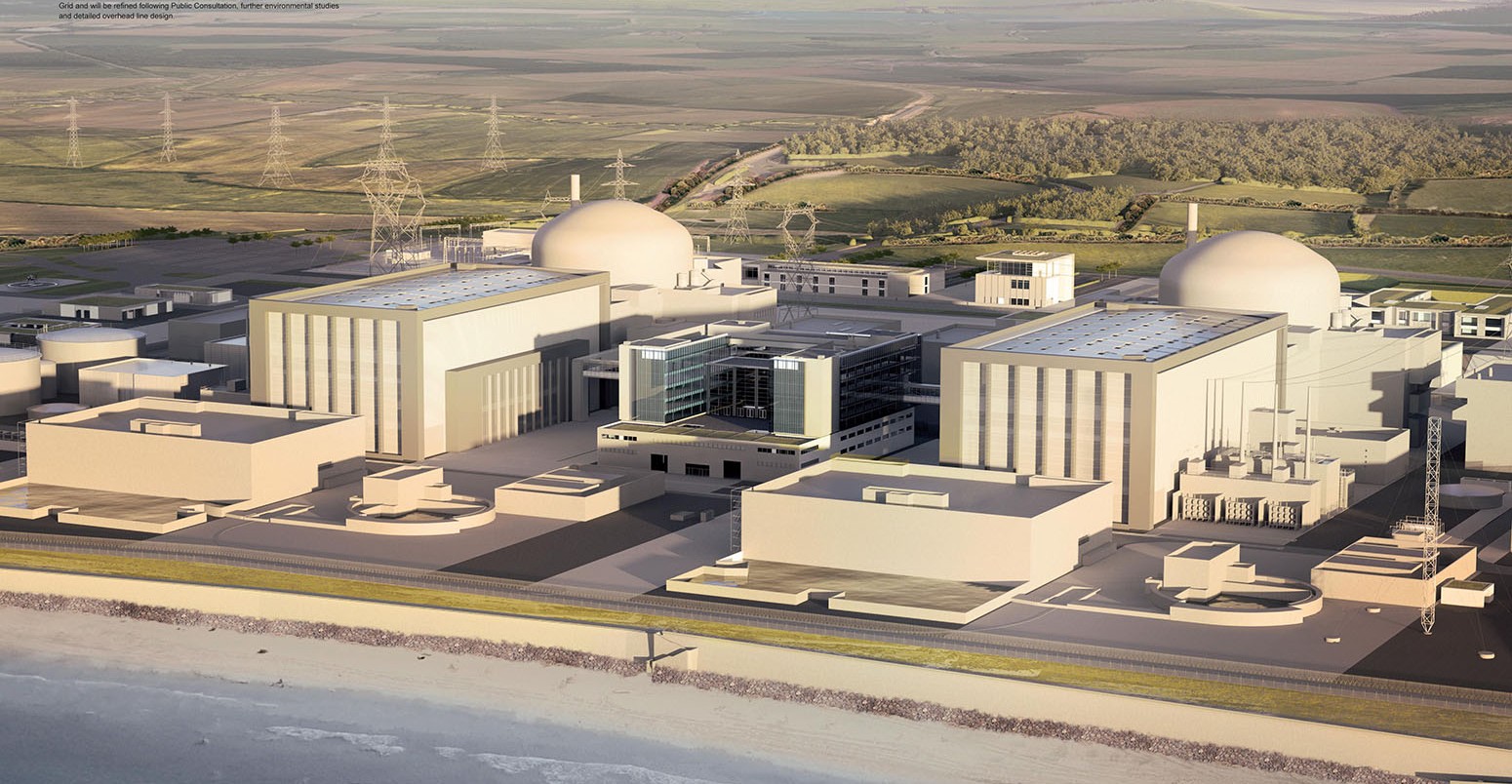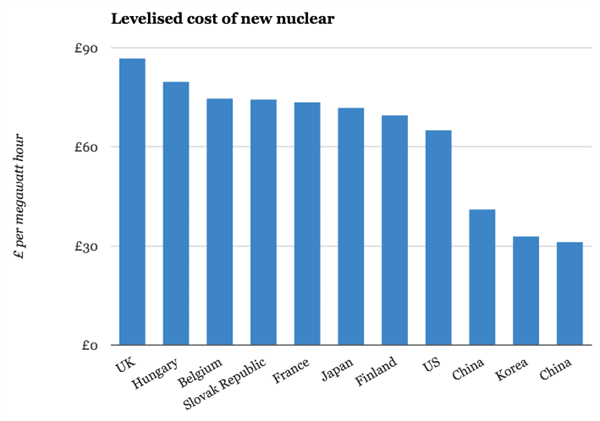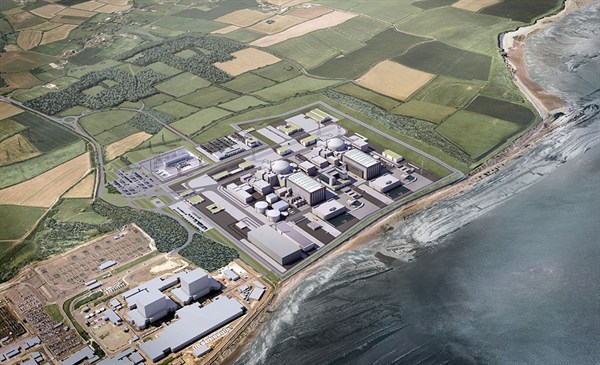
New nuclear power in UK would be the world’s most costly, says report
Simon Evans
09.03.15Simon Evans
03.09.2015 | 5:45pmNew nuclear power in the UK would be more expensive than in any other country, according to a report from the International Energy Agency (IEA) and Nuclear Energy Agency (NEA).
The study on Projected Costs of Electricity Generation tries to compare different technologies and countries on a level playing field. It uses uniform assumptions along with specific data gathered in a survey of 181 plants in 22 countries, including 11 planned new nuclear plants.
The results, showing the high cost of UK nuclear, arrive as the government prepares to finalise a £24.5bn deal to build Hinkley C, the country’s first new nuclear plant for a generation. The scheme — seen as a key part of the UK’s climate efforts — was today hit by fresh delays.
Carbon Brief compares the projected costs of new nuclear in the UK, and elsewhere.
Level playing field
It’s not easy to compare the cheapest way to build a power plant. Some electricity markets are effectively government-run, others deregulated, such as the UK’s.
The cost of labour, as well as access to finance, supply chains and expertise, all differ widely. Moreover, studies often take different approaches, including or excluding the costs of carbon, health impacts or grid management.
The IEA and NEA’s regular projected costs of generation report attempts to cut through this mess, using a standardised approach to compare technologies on a level playing field. It does this using the levelised cost of electricity (LCOE), a measure of how much it would cost to get a megawatt hour (MWh) of power from a new plant in a particular year, in this case 2020.
There are obvious reasons to do this. What’s the most cost-effective way to replace ageing energy infrastructure? Which is the cheapest low-carbon technology? However, the report urges caution:
So the LCOE isn’t perfect, and a lengthy chapter explains why it will become increasingly imperfect in a low-carbon future. Still, it’s natural to compare and that’s kind of the point of the report.
The report’s section on nuclear power compares the UK to nine other countries, with the UK coming out more expensive than any of the others.
Using a 10% discount rate — a rough proxy for borrowing costs — the report finds new nuclear in the UK would cost £87/MWh. That’s a fifth more expensive than in France, a third more than the US and more than twice the projected costs in China or Korea (chart below).

Projected LCOE for new nuclear capacity for a range of countries and projects, including two in China. The figures assume a 10% discount rate and are reported in $2013. They are converted here using the 2013 exchange rate. The UK figure is a hybrid of projections for two different reactor types. The French figure is based on a projected series of plants. Belgium is included despite having no projects in the pipeline. The Slovak Republic figure is based on a project that started in 1986. The projections are subject to uncertainty, with associated error bars that may exceed the differences between countries. Source: Table 3.11, Projected Costs of Electricity Generation 2015. Chart by Carbon Brief.
Why is the UK so much more expensive? There are a number of possible reasons, as we will see shortly.
Another factor could be that the UK numbers are more up to date and accurate. One nuclear industry source tells Carbon Brief that other country estimates may exclude certain types of public subsidy, for instance, gifted land or support during the reactor design approval process.
UK pipeline
A total of 11 new nuclear units are planned in the UK, with a combined capacity of nearly 16GW. These are expected to play a key role in decarbonising the UK’s power supplies, a step that is essential if the UK is to reach its longer-term economy-wide climate targets cost-effectively.
The first of these was expected to be the Hinkley C scheme, a consortium led by French firm EDF building two European Pressurised Water Reactors (EPRs) with a total capacity of 3.2GW. A UK white paper in 2008 said this much nuclear could be bought for £5.6bn.
Originally intended to start operating in 2017, the project was later pushed back to 2023, at a cost of £16bn. Today, EDF said it would be even later because of delays finalising the contract. China General Nuclear Group is due to back the scheme, leading to speculation a deal will be announced when Chinese president Xi Jinping visits the UK on 20 October.

Artist’s impression of Hinkley Point C. Source: EDF Energy Media Library.
The further delay for Hinkley C means other new nuclear projects could be finished first, such as the NuGen consortium’s scheme to build three AP1000 reactors at Moorhouse in Cumbria. Their combined capacity would be similar to Hinkley C’s.
The UK nuclear price projections in the IEA/NEA report are a hybrid of cost estimates for schemes made up of two EPR reactors or three AP1000s, the NEA tells Carbon Brief.
The actual cost of building Hinkley C is uncertain. Last year EDF said its 1.6GW EPR at Flamanville 3 in Normandy would cost £7bn. Hinkley C would have two EPRs costing £14bn, while UK- and site-specific factors would add £2bn, EDF said, bringing the total to £16bn.
However, Flamanville has had multiple delays and cost overruns. New estimates have just emerged, suggesting it will now cost â?¬10.5bn (£7.65bn). Europe’s other EPR, the 1.6GW Olkiluoto plant in Finland, is also late and over budget. Costs have risen from £2.2bn to £6.3bn.
Though there are interesting insights to be gained by comparing UK nuclear costs to other countries, these unreliable historical cost estimates show it probably isn’t a good idea to set too much store in the IEA/NEA projections.
Cost of capital
A further complication is that the EDF cost figures above exclude the cost of borrowing. Most of the price of nuclear energy comes during construction, so this cost of capital can have a huge impact.
This is a key reason why UK nuclear appears expensive in the IEA/NEA report. It gives expected borrowing costs of 9.5% for the UK versus 6% in Korea, for example. These costs are heavily influenced by market structures and respective policy environments.
For instance, regulated or state-controlled power markets may prioritise price stability and energy security, limiting policy and financial risks. Reducing these risks brings down borrowing costs, says a spokesman for the World Nuclear Association.
That’s why UK new nuclear could be funded more cheaply under public ownership, according to the Institute for Public Policy Research, a left-leaning thinktank. It says the cost of capital could be reduced by up to 1.2%, depending on the details of a public-private nuclear deal.
Joss Garman, associate director for energy and climate change at IPPR, tells Carbon Brief:
You can see the impact of financing costs in the European Commission estimate for Hinkley C. When it approved the project in late 2014, it said it would cost £24.5bn. This includes the cost of finance and the impact of inflation. Contract terms would see EDF halve excess profits beyond a 15% return on investment with government, the commission says.
Inflation could also have a big impact on the price consumers pay for Hinkley C. The £92.50/MWh “strike price” Hinkley C will receive is guaranteed for 35 years and indexed to Consumer Price Index inflation. On recent trends, this means the strike price would rise to £124/MWh by 2023.
The design of the strike price means the consumer cost of this subsidy also depends on unknowable future power prices. Carbon Brief analysis suggests it could be anywhere between £4 and £17 per household per year for Hinkley C, under a range of plausible future wholesale electricity prices (see below for a note on the method used here).
Learning
Even though new nuclear in the UK seems expensive compared to current wholesale prices of around £50/MWh, it’s worth asking how it compares to the alternatives. Legislation means no new coal will be built in the UK without carbon capture and storage, which is even more costly.
Gas is relatively cheap to build, but faces rising carbon prices, tightening carbon caps and unknown future fuel prices. The IEA report puts the 2020 cost for UK new-build gas at £69/MWh, not including full carbon costs. A Department for Energy and Climate Change (DECC) estimate puts it at £80/MWh for projects starting in 2013 and £85/MWh in 2019.
The Committee on Climate Change (CCC) expects nuclear to be cost competitive with other low-carbon power sources with falling costs through the 2020s. Levelised costs in the late 2020s would £65-75/MWh, down from £80-95/MWh for earlier schemes, the CCC says.
Some onshore wind is already cheaper than this, however, and recent offshore schemes cost £117/MWh. Policy Exchange, a right-leaning thinktank, estimates that onshore costs could fall from £85/MWh today to £60/MWh by 2020 — well before any new nuclear could be built.
Expected nuclear cost reductions in the 2020s depend on learning effects as the supply chain is built up and industry skills develop. This is another reason why UK new nuclear is said to be more expensive than in Asian countries, where large numbers of nuclear plants have been built in recent years. These countries also benefit from lower labour and construction costs.
Not everyone believes costs will fall. Doug Parr, Greenpeace chief scientist, tells Carbon Brief that costs have not come down for decades, whereas renewables are getting cheaper.
A DECC spokesperson tells Carbon Brief:
Nuclear power has long been controversial. It continues to provoke opposition among many green groups, as well as several other EU countries like Germany and Austria. While it is nearly zero carbon, its costs have always been notoriously hard to estimate.
Despite this, it continues to form a key plank of the UK government’s “portfolio” approach to decarbonisation. With such a great challenge, it reasons, we will need every low-carbon technology we can find.
Main image: CGI view of Hinkley Point C.
Note on cost per household analysis: Carbon Brief calculated the per household cost of Hinkley C using its 3.2GW capacity, an estimated 90% capacity factor, the £92.50/MWh strike price and range of wholesale power prices from £40-80/MWh. The analysis assumes 26m households, using a third of Hinkley C's output, in line with the residential share of current electricity consumption.
-
New nuclear power in the UK would be more expensive than in any other country #HinkleyC

